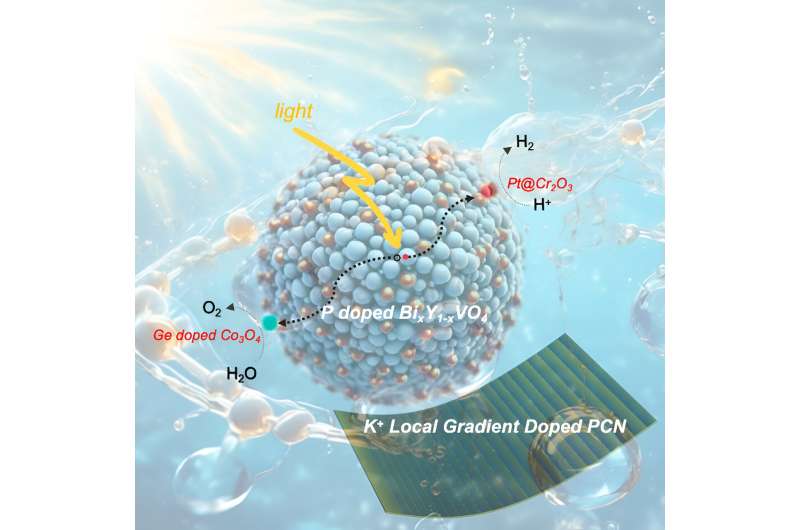
In photocatalytic water splitting, a photocatalyst, typically a semiconductor material, is used to absorb light energy and initiate the water splitting reaction. When light is absorbed by the photocatalyst, it creates electron-hole pairs. The excited electrons can then reduce water, while the holes can oxidize water.
However, there are several challenges associated with photocatalytic water splitting, mainly including low efficiency, limited visible light absorption, and photocorrosion of the photocatalyst. Thus, various strategies such as heterojunction formation, nanostructure design, cocatalysts utilization, dye sensitization, surface plasmonic enhancement, doping, and defect control are being explored to solve these problems and break the efficiency bottleneck.
Doping, in particular, has garnered significant attention. Various studies have demonstrated its efficacy. For instance, Kudo’s team achieved an apparent quantum yield (AQY) exceeding 50% through metal oxide modification. Nitrogen doping in TiO2, as reported by Asahi, proved crucial for band gap narrowing and enhanced photocatalytic activity.
Domen introduced a solid solution of gallium and zinc nitrogen oxide (Ga1–xZnx)(N1–xOx) for visible light water splitting. Chen explored disorder introduction in TiO2 nanophase layers via hydrogenation to enhance solar absorption. Takata achieved overall water splitting using a modified aluminum-doped strontium titanate (SrTiO3:Al) photocatalyst with an external quantum efficiency of up to 96%.
Recently, Prof. Wenfeng Shangguan’s team from Shanghai Jiao Tong University, China, integrated their research with other significant studies to provide a comprehensive review of energy band structure, microstructure, defect regulation, and doping strategies influencing photocatalytic activity. Their focus on doping rare earth elements into bismuth-based composite oxides aims to enhance the conduction band minimum and achieve overall water splitting under visible light.
Their innovative asymmetric doping technique—Selected Local Gradient Doping—allows controlled release of doped ions, promising significant contributions to novel materials exploration and energy conversion efficiency enhancement in photocatalytic water splitting under visible light. The results were published in Chinese Journal of Catalysis.
More information:
Wenjian Fang et al, Account of doping photocatalyst for water splitting, Chinese Journal of Catalysis (2024). DOI: 10.1016/S1872-2067(23)64637-6
Citation:
Researchers achieve high quantum yield in photocatalytic water splitting (2024, June 28)
retrieved 29 June 2024
from https://phys.org/news/2024-06-high-quantum-yield-photocatalytic.html
This document is subject to copyright. Apart from any fair dealing for the purpose of private study or research, no
part may be reproduced without the written permission. The content is provided for information purposes only.







